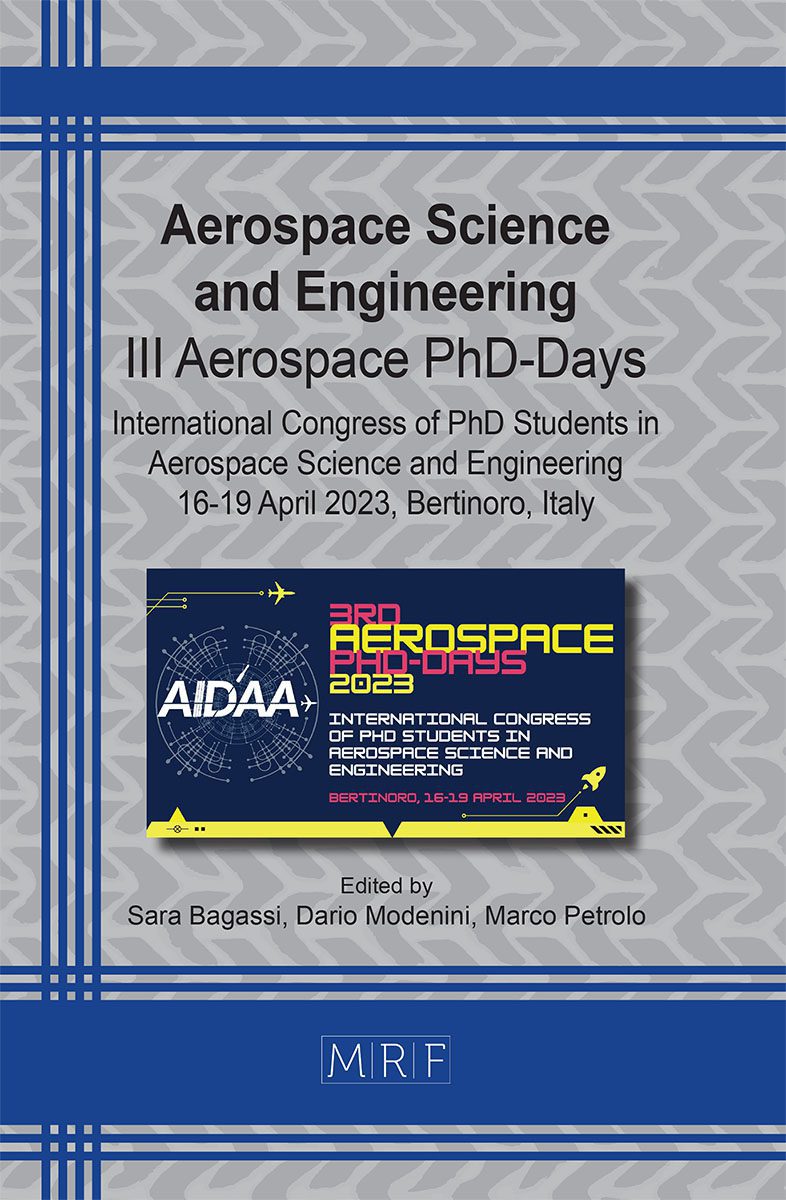Innovative design methodology with LTO noise prediction capabilities for future supersonic aircraft
Grazia Piccirillo
download PDFAbstract. To bring supersonic flight back to reality, it is crucial to demonstrate that future supersonic aircraft can reduce their environmental impact compared to the past. In line with this effort, the EU-funded MORE&LESS project is reviewing the environmental impact of supersonic aviation, by applying a multidisciplinary holistic framework to help check how enabling technologies of supersonic aircraft, trajectories, and operations comply with environmental requirements. The present study is part of this project and focuses on updating the traditional conceptual design process with methods for estimating the noise generated at airport level by supersonic aircraft. To achieve this, it is necessary to include some basic capability in the design flow, such as modelling for aircraft noise prediction and simulation of take-off and landing procedures. The approach used to consider these two elements is described in this paper. Preliminary results from Concorde-like case study are presented.
Keywords
LTO Noise, Conceptual Design, Supersonic Aircraft, MORE&LESS Project
Published online 9/1/2023, 8 pages
Copyright © 2023 by the author(s)
Published under license by Materials Research Forum LLC., Millersville PA, USA
Citation: Grazia Piccirillo, Innovative design methodology with LTO noise prediction capabilities for future supersonic aircraft, Materials Research Proceedings, Vol. 33, pp 68-75, 2023
DOI: https://doi.org/10.21741/9781644902677-11
The article was published as article 11 of the book Aerospace Science and Engineering
![]() Content from this work may be used under the terms of the Creative Commons Attribution 3.0 license. Any further distribution of this work must maintain attribution to the author(s) and the title of the work, journal citation and DOI.
Content from this work may be used under the terms of the Creative Commons Attribution 3.0 license. Any further distribution of this work must maintain attribution to the author(s) and the title of the work, journal citation and DOI.
References
[1] S. Candel, «Concorde and the Future of Supersonic Transport,» Journal of Propulsion and Power, p. 10, 2023.
[2] Y. Sun e H. Smith, «Review and prospect of supersonic business jet design,» Progress in Aerospace Sciences, vol. 90, pp. 12-38, 2017. https://doi.org/10.1016/j.paerosci.2016.12.003
[3] L. R. Benson, Quieting the Boom: The Shaped Sonic Boom Demonstrator and the Quest for Quiet, NASA Aeronautics book series, 2013.
[4] Boom Supersonic, «BOOM,» [Online]. Available: https://boomsupersonic.com/overture. [March 2023].
[5] Internation Civil Aviation Organization (ICAO), «ICAO Committee on Aviation Environmental Protection,» in ICAO Environmental Report , 2022, p. 4.
[6] M. Project. [Online]. Available: https://www.h2020moreandless.eu/project/. [March 2023].
[7] J. J. Berton, D. L. Huff, K. Geiselhart e J. Seidel, «Supersonic Technology Concept Aeroplanes for Environmental Studies,» in AIAA, Special Session: Community Noise Impact from Supersonic Transports, Orlando, Florida, 2020. https://doi.org/10.2514/6.2020-0263
[8] J. J. Berton, S. M. Jones, J. A. Seidel e D. L. Huff, «Advanced Noise Abatement Procedures for a Supersonic Business Jet,» in International Symposium on Air Breathing Engines (ISABE), Manchester, United Kingdom, 2017.
[9] D. Ferretto, R. Fusaro e N. Viola , «A conceptual design tool to support high-speed vehicle design,» in AIAA, Aircraft Concept Design, Tools and Processes III, 2020. https://doi.org/10.2514/6.2020-2647
[10] B. J. Clark, «Computer Program To Predict Aircraft Noise Levels,» NASA Technical Paper 1913, 1981.
[11] G. Piccirillo, R. Fusaro, N. Viola e L. Federico, «Guidelines for the LTO Noise Assessment of Future Civil Supersonic Aircraft in Conceptual Design,» aerospace, 2022. https://doi.org/10.3390/aerospace9010027































